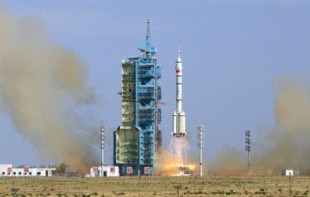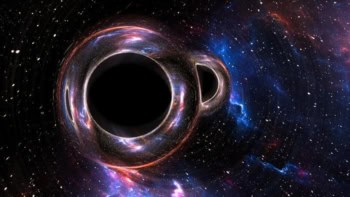A new theory has been proposed to explain how the giant planets -- Jupiter, Saturn and Uranus -- became tilted. The tilts of these planets are fixed, whereas the tilts of the smaller Earth-like planets -- Mercury, Mars and Venus -- have changed with time. The new theory, which has been developed by Adrian Brunini at the National University of La Plata in Argentina, says that the tilts were fixed by the way the planets interacted gravitationally as they moved from being close together to the positions they occupy today (Nature 440 1163). If correct, the theory would solve one of the biggest mysteries in our solar system.
All the planets in our solar system are tilted — in other words, their equators do not lie in the plane of their orbits around the Sun. For the Earth, this tilt or “obliquity” is 23° and is responsible for the changing seasons. Scientists now know that the obliquities of the smaller planets, Mercury, Mars and Venus, change over time. However, the obliquities of the giant planets, which vary from 3° for Jupiter to around 97° for Uranus, are stable. Their tilts must therefore have been fixed into their present positions when the planets formed long ago, probably in the early solar system some 4.5 billion years ago.
Brunini’s new theory accounts for the origin of the giant planets’ tilts in the context of a recent model for how the outer planets formed. That model — developed by Alessandro Morbidelli and Kleomenis Tsiganis of the Observatoire de la Côte d’Azur in France, Hal Levison of the Southwest Research Institute in Boulder, Colorado, and Rodney Gomes of the National Observatory in Brazil last year — supposes that the outer planets were originally closer together than they are today. It suggested that once the giant planets had gained most of their mass from the surrounding gas during the early history of the solar system, Jupiter and Saturn then became immersed in a disk of thousands of tiny balls of rock and ice, known as planetissimals.
The combined gravitational effects of these balls, which lay in a disk beyond Neptune, caused the position of the planets to migrate: Saturn moved slightly away from the Sun, while Jupiter moved slightly towards it. This process eventually resulted in Saturn having an orbital period that was exactly twice that of Jupiter’s.
Brunini obtained his results by solving the equations of motion and rotation of the planets based on the assumption that the planets used to move along orbits that were much nearer to the Sun. The calculations also assumed that the orbits of Saturn and Uranus slowly got bigger over the first few hundred million years of the solar system. His results suggest that the giant planets’ obliquities might have been fixed into their present-day positions by gravitational interactions between the planets during this migration. The tilts did not change after this time because the planets were now too widely spaced to exert any further signficant influence on each other.
“My findings are a step forward in understanding the formation of our solar system,” says Brunini. He now wants to extend the theory to planetary systems orbiting suns in other solar systems.



